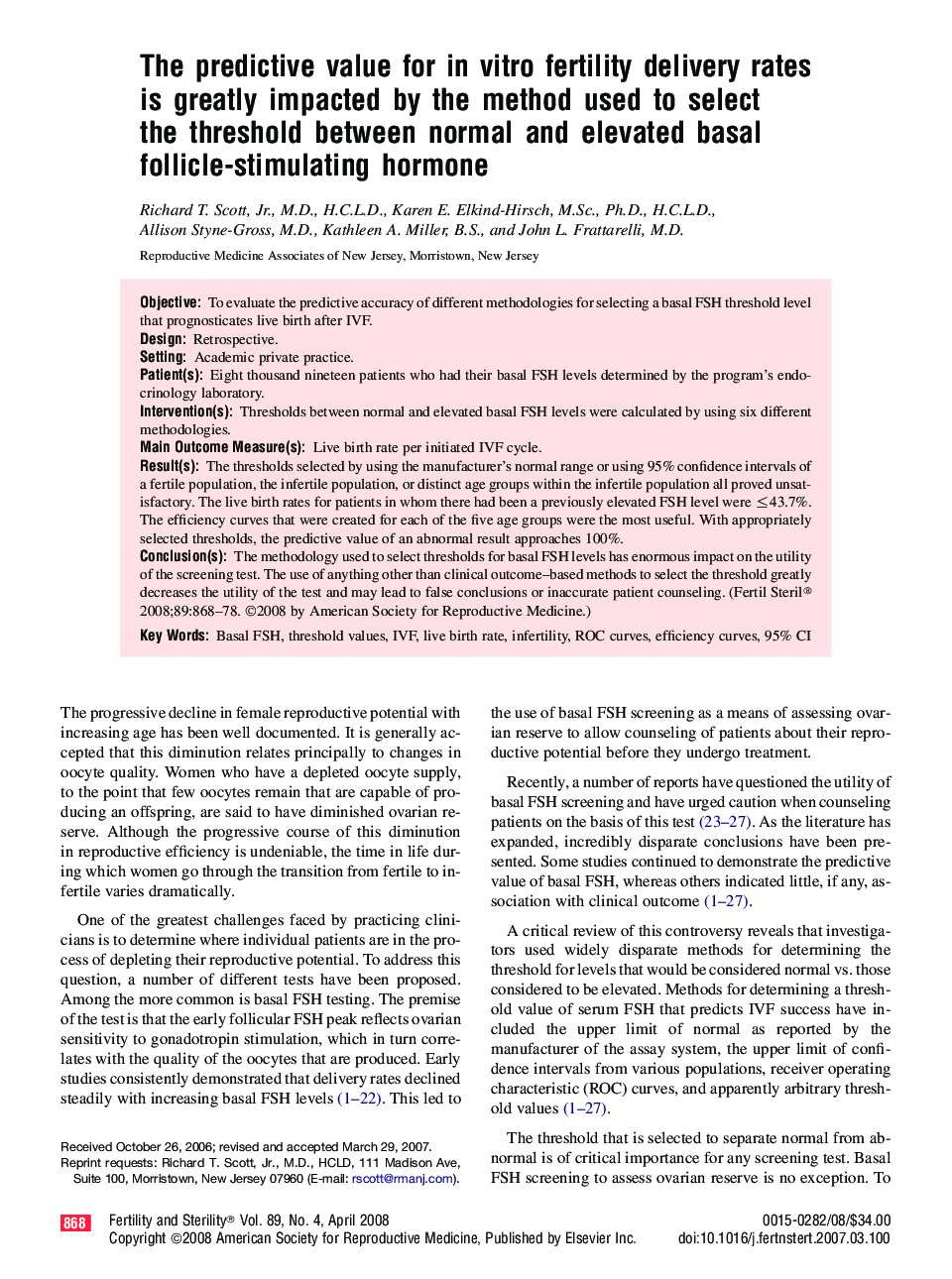| Article ID | Journal | Published Year | Pages | File Type |
|---|---|---|---|---|
| 3940195 | Fertility and Sterility | 2008 | 11 Pages |
ObjectiveTo evaluate the predictive accuracy of different methodologies for selecting a basal FSH threshold level that prognosticates live birth after IVF.DesignRetrospective.SettingAcademic private practice.Patient(s)Eight thousand nineteen patients who had their basal FSH levels determined by the program's endocrinology laboratory.Intervention(s)Thresholds between normal and elevated basal FSH levels were calculated by using six different methodologies.Main Outcome Measure(s)Live birth rate per initiated IVF cycle.Result(s)The thresholds selected by using the manufacturer's normal range or using 95% confidence intervals of a fertile population, the infertile population, or distinct age groups within the infertile population all proved unsatisfactory. The live birth rates for patients in whom there had been a previously elevated FSH level were ≤43.7%. The efficiency curves that were created for each of the five age groups were the most useful. With appropriately selected thresholds, the predictive value of an abnormal result approaches 100%.Conclusion(s)The methodology used to select thresholds for basal FSH levels has enormous impact on the utility of the screening test. The use of anything other than clinical outcome–based methods to select the threshold greatly decreases the utility of the test and may lead to false conclusions or inaccurate patient counseling.
